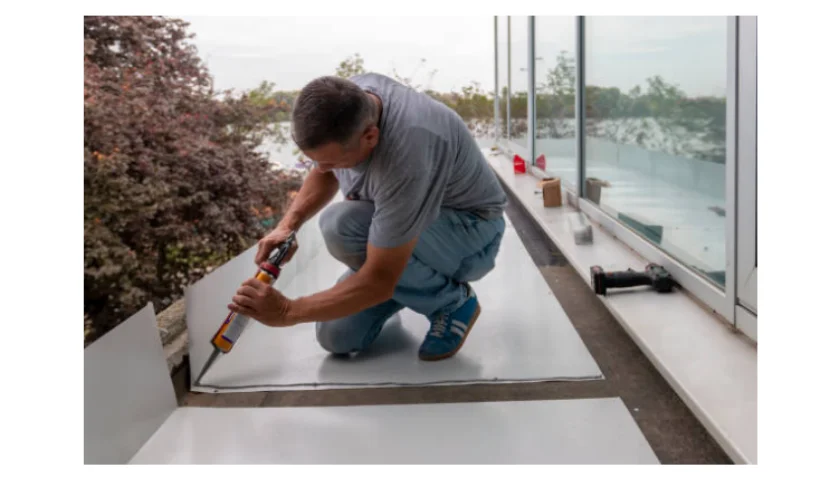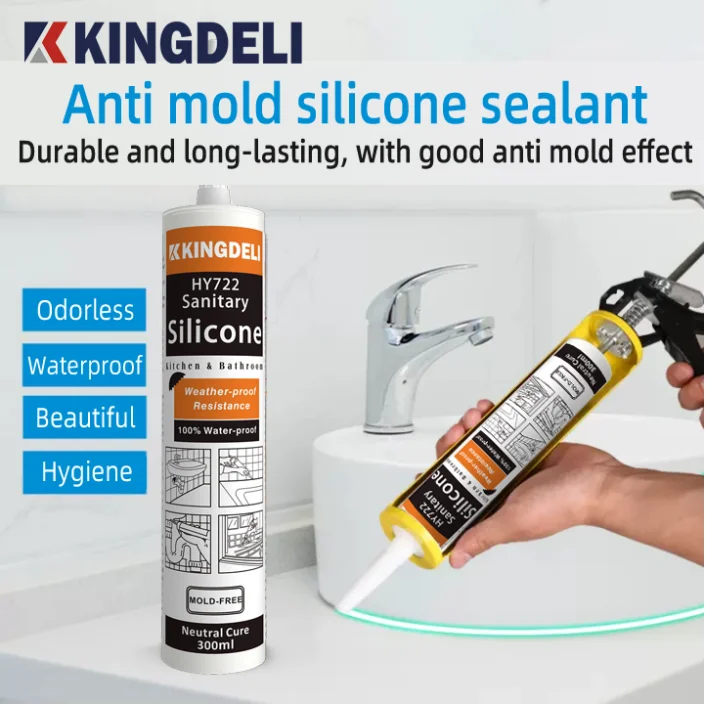Waterproof Sealant: How to Use It and Which Is Better

Choosing the Best Caulk for Showers and Bathtubs
Key Features of the Best Caulk for Showers
You want something that works great in wet spots. Go for sealants that block water totally, keep mold away, bend without breaking, and stick like glue. These things stop water from sneaking into gaps. That’s important because leaks can grow mold or ruin walls. And the best caulk for showers should be simple to use and stay strong even when it’s steamy or the temperature jumps around.
Why Waterproof Silicone Is Ideal for Wet Areas
It’s a stretchy, sticky stuff that seals gaps in houses, cars, or even big building projects. It laughs at moisture, which makes it awesome for super damp places like showers, tubs, and sinks. Unlike acrylic or latex caulks, waterproof silicone doesn’t shrink or fall apart when it gets wet. It stops water from leaking through joints or surfaces.
Comparing Waterproof Caulk Options for Bathtubs
You’ve got options like acrylic latex, polyurethane, or hybrid polymers for waterproof caulk, but silicone steals the show. It lasts forever and stretches like a rubber band. Acrylic caulks? You can paint them, but they wear out fast in wet spots. Polyurethane is tough but a hassle to put on and clean up. Hybrid polymers mix some good stuff from both, but they’re pricey. Want the best caulk for bathtubs without breaking the bank? Go with 100% silicone. It makes seals that stay tight for years.
How Kingdeli’s Formulations Enhance Performance in Bathrooms
Foshan Kingdeli Viscose CO.,LTD makes some high quality silicone products for bathrooms. Take their HY-2100 General Use Neutral Silicone Sealant—it grabs onto ceramic tiles and glass without spitting out nasty acids while it dries. That’s great for small, closed-in shower spaces. Then there’s the HY-3300 Weatherproof Neutral Silicone Sealant. It stays bendy even after years of steam and hot-cold switches around tubs. Got mold worries? The HY-722B Sanitary Acetic Silicone Sealant has anti-fungal stuff to stop germs from popping up in corners or seams.
Application Techniques for Waterproof Sealants
Step-by-step Guide to Applying Waterproof Silicone Sealant
Think applying waterproof silicone sealant sounds hard? Nah, it’s pretty easy if you prep right and grab the right tools. Here’s how to nail it like a pro:
Step 1: Grab Your Stuff
First, round up these things:
A putty knife or scraper
Something to clean with, like alcohol, bleach, or a regular cleaner
A solid silicone gun
A smoothing tool for caulk
Waterproof sealant
Masking tape (if you want really clean lines)
Step 2: Clear Out Old Caulk
Get rid of any old or messed-up caulk first. Use your putty knife or scraper to lift it off gently. If it’s stuck, grab a sealant remover. Make sure the area is super clean and dry before you keep going.
Step 3: Wipe It Down
Clean the surface with alcohol, bleach, or a household cleaner. This part’s a big deal because it helps the new sealant stick tight. Wait till it’s completely dry.
Step 4: Put on the Waterproof Sealant
Pop the waterproof silicone sealant into your silicone gun. Try it on some scrap stuff first to get the feel. Ready? Squeeze a nice, even line along the seam. Go slow and keep the pressure steady. Want neat edges? Stick masking tape on both sides of the seam before you start.
Step 5: Smooth It Out
Once the sealant’s on, grab a smoothing tool or dip your finger in soapy water to even it out. This makes it stick better and look tidy.
Step 6: Let It Set
Give the sealant at least 24 hours to dry before it gets wet or used a lot. That time helps it form a super strong bond.
Common Mistakes to Avoid When Sealing with Waterproof Caulk
People mess up sealing all the time. Don’t go crazy with the caulk—it looks sloppy if you use too much. Clean surfaces really well, or the caulk won’t hold. Try masking tape for sharp edges. Take your time smoothing, or you’ll get air bubbles.
Benefits of Using Kingdeli’s Waterproof Silicone Products
Long-Term Durability and Mold Resistance
Kingdeli’s HY-722 Sanitary Silicone Sealant is awesome at stopping gross black mold spots in damp bathrooms. It’s got special anti-fungal stuff to keep seams clean. The best waterproof sealants work great for windows, doors, roofs, and bathrooms. They stay tough and don’t crack or peel, even after years.
High Adhesion on Ceramic, Glass, and Acrylic Surfaces
The HY-726 Premium Neutral Silicone Sealant sticks like crazy to smooth stuff like glazed tiles or acrylic tubs. No need for primers—it makes strong seals that handle daily wear and tear.
Eco-Friendly Formulas and Safe Indoor Use
Kingdeli’s products use low-VOC ingredients, so they’re good for the planet. They follow global safety rules and are totally fine for indoor use, even in tiny bathrooms with bad air flow. Waterproof silicone sealants also stand up to weather, so they’re great inside and can handle outdoor jobs too.

Where to Use the Best Caulk for Showers and Bathtubs in Your Home
Sealing Shower Edges and Corners with Waterproof Silicone
Put waterproof silicone in corners where tiled walls meet or where walls hit the shower base. These spots leak easy if they’re not sealed right, since heat makes things shift a bit.
Applying Waterproof Caulk Around Bathtub Fixtures
Use silicone around faucet bases, spouts, overflow plates, and drains. Don’t forget to seal where the tub meets the wall. This stops water from sneaking behind walls, which can lead to rot or mold.
Using Sealants in Kitchens, Laundry Rooms, and More
Foshan Kingdeli Viscose CO.,LTD’s silicone, like the HY-3300 Weatherproof Neutral Silicone Sealant, isn’t just for bathrooms. It’s great for kitchen sinks or laundry basins where water’s always splashing.
Maintenance Tips After Applying Waterproof Caulk
Cleaning and Inspecting Sealed Joints Regularly
Check your sealed joints every few months. Press them lightly to spot any problems. See cracks or dark stains? Clean with vinegar or a little bleach, depending on what surface you’re working with.
When to Reapply or Replace Old Waterproof Silicone
If the caulk peels or feels stiff, it’s time to swap it out. Bathroom silicone usually lasts 5–10 years, depending on how humid it is and how you care for it.
Ensuring Maximum Lifespan of the Best Caulk for Showers
Want the caulk for showers to last forever? Try these:
Turn on exhaust fans when you shower.
Wipe wet spots down often.
Don’t use harsh cleaners on caulk lines.
Frequently Asked Questions (FAQ)
How Long Does Waterproof Silicone Take to Cure?
Most waterproof silicone sets in about 24 hours in a normal room. If it’s super humid, it might take 48 hours to get really strong.
Can I Apply New Caulk Over Old One?
Nope, that’s a bad idea. Old caulk can stop new waterproof caulk from sticking right. Always scrape off the old stuff first.
Is Kingdeli’s Silicone Safe for Indoor Use?
Yup, all Kingdeli products, like the HY-3300 Weatherproof Neutral Silicone Sealant, have low-VOC emissions. They’re safe for kitchens and bathrooms inside.
How Often Should I Replace Shower Caulking?
Every 5–10 years, depending on how much you use it. Check it once a year for cracks or mold stains.
Since 1998, Foshan Kingdeli Viscose CO.,LTD has been making awesome bathroom sealants for nearly 30 years. Want to see our full range? Get in touch!
